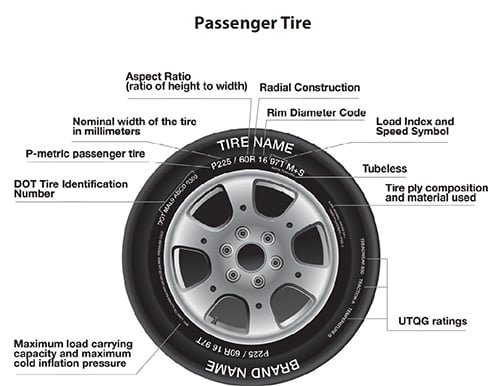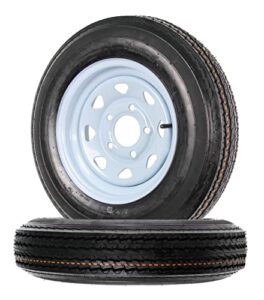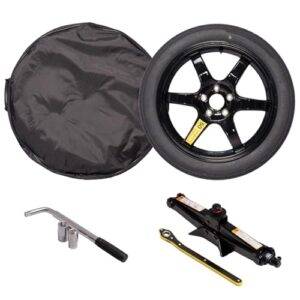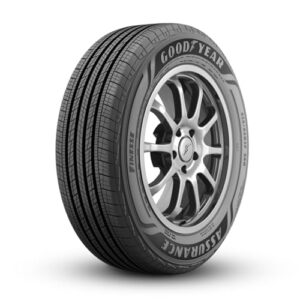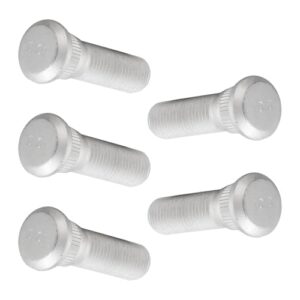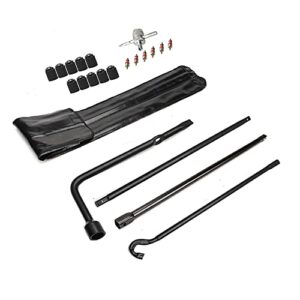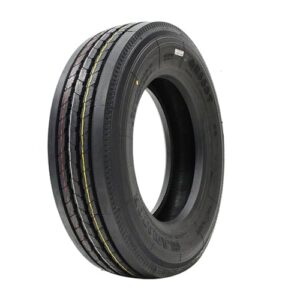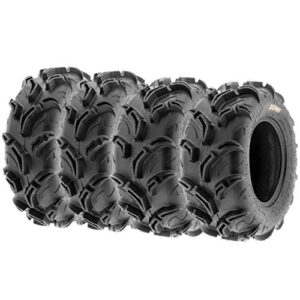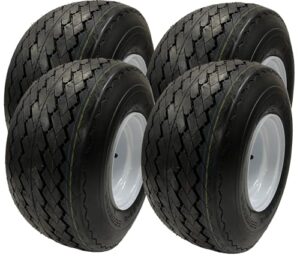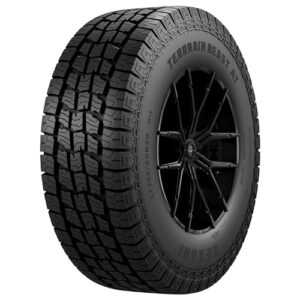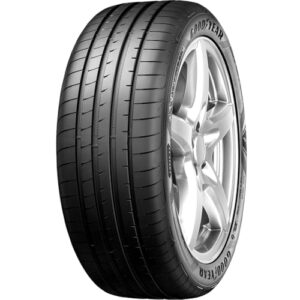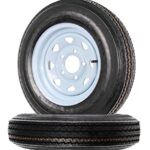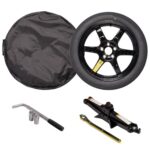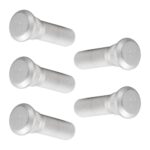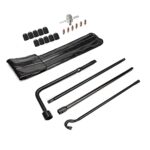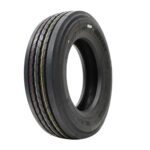To read a tire’s manufacturing date, check the DOT code on the tire’s sidewall. The last four digits indicate the week and year.
Understanding tire manufacturing dates is crucial for safety and performance. Tires degrade over time, even if unused. The Department of Transportation (DOT) code reveals this date. Located on the tire’s sidewall, it includes letters and numbers. Focus on the last four digits.
For example, “2619” means the tire was made in the 26th week of 2019. Knowing this helps in making informed decisions about tire longevity and replacement. Always check this code when purchasing new or used tires to ensure optimal safety and performance.
Importance Of Tire Manufacturing Date
Understanding the tire manufacturing date is crucial for your vehicle’s safety. Tires are not just rubber; they age and deteriorate over time. Knowing the date helps you make informed decisions about tire replacement. This section dives into why this knowledge matters.
Safety Implications
Old tires can pose significant safety risks. Even unused tires degrade over time. The rubber becomes brittle, increasing the risk of tire blowouts. A tire blowout can lead to accidents and injuries. Therefore, checking the manufacturing date is vital for your safety.
Performance Impact
Tires lose their grip as they age. This affects your vehicle’s performance. Old tires may not provide the same traction as new ones. This can affect braking and handling. Fresh tires ensure optimal performance, improving your driving experience.
| Age of Tire | Safety Concerns | Performance Issues |
|---|---|---|
| Less than 5 years | Minimal | Optimal |
| 5-10 years | Moderate | Reduced Grip |
| More than 10 years | High | Poor Traction |
For the best driving experience, always check the tire manufacturing date. It helps you maintain both safety and performance.

Locating The Date Code
Understanding how to read a tire’s manufacturing date is crucial. It helps ensure your tires are safe and reliable. The date code is usually found on the tire’s sidewall. This code gives you important information about when the tire was made. Let’s dive into how you can locate and read this date code.
Sidewall Inspection
The first step is to inspect the sidewall of the tire. The sidewall is the outer part of the tire that faces you. Look for a series of letters and numbers. These characters contain the date code. You might need to clean the sidewall to see the code clearly. Use a cloth or brush for this.
Dot Code Identification
Next, identify the DOT code on the sidewall. The DOT code starts with the letters “DOT”. Following these letters, you will see a series of numbers and letters. The last four digits of this code represent the tire’s manufacturing date.
For example, if the code is “DOT X0 T7 3P 0419”, the last four digits “0419” are the date code. This means the tire was made in the 4th week of 2019. Here’s a quick breakdown:
- 04 – Week of manufacture (4th week)
- 19 – Year of manufacture (2019)
By decoding these digits, you can easily determine the age of your tire. Knowing this helps you decide if it’s time to replace your tires.
Deciphering The Date Code
Understanding how to read the tire manufacturing date is crucial. It helps you know the age of your tires. This is important for safety and performance. The date code is part of the DOT code on the tire’s sidewall. Let’s dive into how to decipher this code.
Week And Year Format
The tire manufacturing date is a four-digit code. This code represents the week and year of production. It’s usually located at the end of the DOT code. For example, if the code reads DOT XXXX XXXX 3521, here’s what it means:
- The first two digits, 35, represent the week of the year. In this case, the 35th week.
- The last two digits, 21, represent the year. Here, it stands for 2021.
So, the tire was made in the 35th week of 2021. This simple format helps you quickly know the tire’s age.
Common Misinterpretations
Some people may misread the date code. They might confuse the week and year format. Here’s a table to clear up common mistakes:
| Code | Correct Interpretation | Common Mistake |
|---|---|---|
| 1520 | 15th week of 2020 | 15th week of 2021 |
| 4519 | 45th week of 2019 | 45th week of 2020 |
| 0222 | 2nd week of 2022 | 2nd week of 2020 |
Always double-check the year digits to avoid confusion. Misreading the date can lead to using old tires. This can be dangerous.
Understanding Tire Aging
Tires age over time, impacting safety and performance. Understanding tire aging is essential for every driver. Knowing how to read tire manufacturing dates helps you stay safe. Let’s delve into lifespan expectations and signs of aging.
Lifespan Expectations
Tires have an expected lifespan. Most tires last between 5 to 10 years. Many factors influence tire lifespan:
- Driving habits
- Road conditions
- Climate
- Maintenance
Check the tire manufacturing date to know the tire’s age. It helps you determine when to replace them.
Signs Of Aging
Aging tires show visible signs of wear. Look for these signs to ensure safety:
- Cracks on the sidewalls
- Tread depth reduction
- Bumps or bulges
- Vibration during driving
Regularly inspect your tires for these signs. Replace old tires to maintain safety.
| Sign of Aging | Description |
|---|---|
| Cracks on the Sidewalls | Visible lines or splits on the tire’s side. |
| Tread Depth Reduction | Tread becomes shallow, reducing grip. |
| Bumps or Bulges | Uneven surfaces on the tire indicate damage. |
| Vibration During Driving | Shaking or wobbling indicates tire issues. |
Impact Of Storage Conditions
Understanding the impact of storage conditions on tires is crucial. Tires can age faster if stored improperly. Proper storage ensures safety and longevity.
Proper Storage Techniques
Proper storage techniques can extend tire life. Follow these tips:
- Store tires in a cool, dry place.
- Keep them away from direct sunlight.
- Place them in airtight bags.
- Keep them off the ground.
- Maintain a vertical or horizontal position.
Climate Considerations
Climate greatly affects tire longevity. Different climates require different storage approaches.
| Climate | Recommended Storage |
|---|---|
| Humid Climate | Use dehumidifiers; store in sealed bags. |
| Dry Climate | Keep away from direct sunlight. |
| Cold Climate | Store indoors to avoid freezing. |
| Hot Climate | Store in a shaded, cool area. |
By following these proper storage techniques and considering the climate, you can ensure your tires remain safe and effective for a longer period. Always check the tire manufacturing date and store them accordingly.

Legal And Warranty Considerations
Understanding the tire manufacturing date is crucial for safety and performance. It also impacts legal and warranty considerations. Knowing these can save you from future headaches.
Regulations
Most countries have regulations for tire manufacturing dates. These rules ensure tires are safe to use.
In the USA, the Department of Transportation (DOT) requires tire dates. The DOT code on tires includes the manufacturing week and year. It helps verify tire age and safety.
European countries follow the same practice. The ECE (Economic Commission for Europe) enforces tire regulations. The ECE code also shows the tire’s manufacturing date.
Using old tires can be dangerous and illegal. Always check the date before buying or using tires.
Manufacturer Warranties
Tire warranties often depend on the manufacturing date. Each brand has different warranty terms.
Warranty Coverage usually includes:
- Manufacturing defects
- Tread wear
- Road hazards
Check the tire’s manufacturing date to ensure warranty validity. Some warranties last up to 6 years from the manufacturing date.
Here’s a quick guide to some popular brands:
| Brand | Warranty Period |
|---|---|
| Michelin | 6 years |
| Goodyear | 6 years |
| Bridgestone | 5 years |
Always read the warranty details. It helps understand what is covered and for how long.
Best Practices For Tire Maintenance
Proper tire maintenance extends the life of your tires. It also ensures safety on the road. Follow these best practices to keep your tires in top shape.
Routine Inspections
Regular inspections are essential. Check your tires every month. Look for signs of wear and damage. Use a tire gauge to check the pressure. The correct pressure is key. It improves fuel efficiency and tire life.
- Inspect tread depth: Use a penny to measure tread depth. Insert the penny into the tread with Lincoln’s head upside down. If you can see all of Lincoln’s head, it’s time to replace the tire.
- Look for cracks and bulges: These can indicate tire damage. Replace any tires with visible cracks or bulges.
- Check for foreign objects: Nails, glass, and other debris can cause punctures. Remove any foreign objects carefully.
Replacement Guidelines
Tires have a limited lifespan. Knowing when to replace them is crucial. Follow these guidelines to ensure safety.
| Condition | Action |
|---|---|
| Worn Tread | Replace the tire |
| Visible Cracks | Replace the tire |
| Age | Replace if older than six years |
- Check the manufacturing date: The date is on the tire’s sidewall. Look for the four-digit number. The first two digits are the week of manufacture. The last two digits are the year.
- Follow manufacturer recommendations: Some manufacturers suggest replacing tires every six years. Always check the guidelines for your specific tires.
By following these best practices, you can keep your tires in excellent condition. Safe tires lead to safe driving experiences.
Myths And Facts About Tire Expiry
Understanding tire expiry is crucial for safety. There are many myths about tire lifespan. Let’s explore the truth behind these myths.
Common Myths
Many people believe tires expire after a fixed number of years. This is a myth. Tires don’t have a set expiry date.
Another myth is that unused tires are always safe. Tires can age even if they are not used. Exposure to heat, sunlight, and ozone can degrade tires.
Some think that tires stored indoors will last forever. This is not true. Proper storage can prolong tire life, but it doesn’t make them last indefinitely.
Expert Opinions
Experts agree that the condition of the tire matters most. Regular inspections are vital.
Tire manufacturers recommend replacing tires every 6 to 10 years. This depends on usage and maintenance.
Check the tire’s manufacturing date for better insights. This is found on the tire sidewall.
| Myth | Fact |
|---|---|
| Tires expire after a fixed number of years. | No set expiry date; depends on condition and usage. |
| Unused tires are always safe. | Tires can age even if unused. |
| Tires stored indoors last forever. | Proper storage helps but doesn’t guarantee indefinite life. |
For safety and performance, follow expert advice. Regular checks and understanding tire age are key.
Frequently Asked Questions
How Do You Read The Manufacture Date On Tires?
Check the last four digits of the DOT code on the tire sidewall. The first two digits indicate the week, and the last two digits indicate the year of manufacture.
What Is The Expiration Date On Tires?
Tires typically expire after six years from the date of manufacture. Check the DOT code on the sidewall.
How To Read Tire Dot Code?
To read a tire DOT code, locate the 12-digit number on the sidewall. The last four digits indicate the tire’s manufacture date.
How Old Can Tires Be And Still Be Safe?
Tires are safe for up to six years from the date of manufacture. After six years, replace them regardless of tread wear.
Conclusion
Knowing how to read tire manufacturing dates ensures safety and optimal performance. Always check the DOT code on the tire sidewall. Regularly inspect your tires for wear and replace them as needed. Staying informed about tire age helps you drive confidently and safely.
Keep your vehicle in top condition by understanding tire manufacturing dates.


